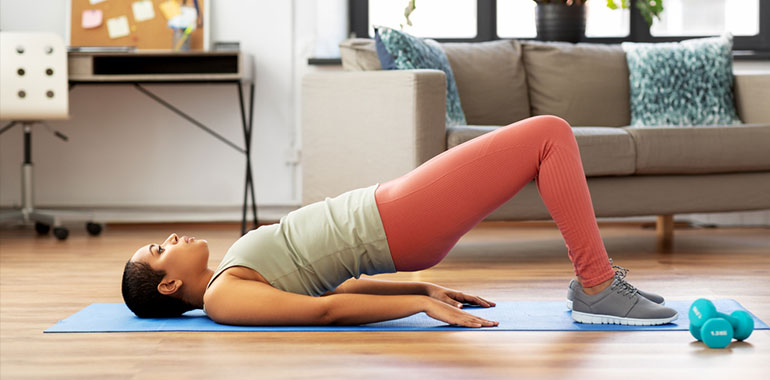
Kegels have long been considered the go-to exercise for pelvic floor health, often recommended to help with issues like incontinence, pelvic organ prolapse, and postpartum recovery. But are they always the right answer?
Many people think that they know how to do a kegel, they understand the importance of strength in this area and there is no reason they could imagine getting support in this area. The truth is, while Kegels can be beneficial for many, they can also be ineffective or even harmful in certain situations.
Understanding when Kegels help and when they hurt is key to making the best choices for your pelvic health. Also understanding how to use the pelvic floor muscles properly is crucial in making a difference in any pelvic health symptoms you are struggling with.
What Are Kegels?
Kegels are exercises designed to strengthen the pelvic floor muscles. Named after Dr. Arnold Kegel, these exercises involve contracting and relaxing the muscles that support the bladder, uterus, and rectum. Ideally, performing Kegels regularly improves muscle tone, increases bladder control, and enhances sexual function.
To perform a Kegel exercise correctly:
- 1Identify the pelvic floor muscles that are on the bottom of the pelvis. Imagine you were emptying your bladder, and someone accidentally opened the door. You would have to quickly stop your flow of urine (don’t practice stopping your flow of urine on the toilet, this can be very harmful to the muscles over time; just imagine)
- 2Another way to think about contracting the pelvic floor muscles is to hold back gas as if it was not an ideal time to let it pass. The muscles around the rectum and the vagina (or penis and testicles) all work together when you do a kegel properly.
- 3Make sure that you are not squeezing your big gluteal muscles that you may be sitting on right now. Also make sure that you don’t hold your breath as that will cause excessive pressure down in your pelvic floor.
- 4Contract these muscles and hold for 3-5 seconds.
- 5Relax for the same amount of time. These muscles are small and need a break too.
- 6Repeat 10 times, 3 times a day.
When Kegels Help
- 1Urinary Incontinence: One of the most common reasons people do Kegels is to improve bladder control. Stress incontinence (leaking urine when coughing, sneezing, or laughing) and urge incontinence (a sudden, uncontrollable urge to urinate) can both benefit from stronger pelvic floor muscles when you have an underlying weakness in the area to start with.
- 2Pelvic Organ Prolapse (Mild to Moderate Cases) If the muscles supporting the pelvic organs weaken, organs like the bladder, uterus, or rectum can begin to sag, leading to discomfort, heaviness and pressure. Kegels may help by strengthening the muscles, providing better support, and potentially preventing worsening the prolapse. This is not always the answer, so if your symptoms worsen with kegels – STOP immediately and consult a pelvic floor physical therapist.
- 3Postpartum Recovery: Pregnancy and childbirth place significant strain on the pelvic floor, often leading to weakness. Kegels can assist in restoring muscle tone, improving bladder control, and enhancing healing after delivery.
- 4Sexual Function: Stronger pelvic floor muscles can improve blood flow to the pelvic region, enhancing sensation and sexual satisfaction. For some, Kegels can also help with orgasm intensity and control.
When Kegels Hurt
1. A Hypertonic (Tight) Pelvic Floor
Not all pelvic floor issues stem from weakness; some arise from excessive tightness. If the pelvic floor is overactive or too tight, Kegels can worsen symptoms like pain, urinary urgency, and constipation.
Signs of a hypertonic pelvic floor include:
If you experience these symptoms, Kegels may be counterproductive, and relaxation techniques may be a better approach. Consult a pelvic floor physical therapist for optimal guidance on how to help your symptoms.
2. Pelvic Pain Conditions
Certain conditions, like vaginismus, dyspareunia (painful intercourse), or interstitial cystitis (painful bladder syndrome), can be aggravated by repetitive pelvic floor contractions. If your muscles are already tight and causing pain, adding more contractions can lead to increased discomfort and dysfunction. Stop the kegels.
3. Chronic Constipation or Difficulty with Bowel Movements
A pelvic floor that is too tight can make it difficult to relax during bowel movements, leading to straining and constipation. In these cases, learning how to relax and lengthen the pelvic floor muscles is more beneficial than strengthening them. Understanding how to breathe and other tips for constipation will make a world of difference with your bowel habits AND your pelvic floor tension.
4. Incorrect Kegel Technique
Many people perform Kegels incorrectly by using the wrong muscles. Common mistakes include:
Alternatives to Kegels
If Kegels aren’t right for you, there are other ways to improve pelvic health.
1. Diaphragmatic Breathing
Breathing deeply into the diaphragm helps relax the pelvic floor, making it a great alternative for those with tight muscles. Try:
2. Pelvic Floor Physical Therapy
A trained pelvic floor therapist can assess your muscles and provide individualized exercises to improve function. Whether you need strengthening or relaxation techniques, therapy can be invaluable. They will uncover what is going on with your body, explain your symptoms and create a roadmap to help you get to where you want to be – optimal pelvic health.
3. Stretching and Yoga
Certain yoga poses, such as child’s pose, deep squats, and happy baby pose, help stretch and release tension in the pelvic floor muscles. Practicing your breathing in these positions can also help to release the pelvic floor muscles.
4. Functional Movement Training
Many everyday activities engage the pelvic floor naturally. Squats, lunges, balancing on one leg and hip bridges can help strengthen the muscles in coordination with the rest of the body. Any balance challenge will help to engage your pelvic floor in a good way and allow your muscles to engage properly to help stabilize your pelvis.
How to Know if Kegels are Right for You
Since pelvic floor health is unique to each person, here are some steps to determine if Kegels are appropriate:
To Kegel or Not to Kegel
While Kegels can be an excellent tool for pelvic floor health, they aren’t a one-size-fits-all solution. There is NO blanket statement that can apply to all patients that have stress incontinence or pelvic pain or prolapse or so much more.
For some people, strengthening the pelvic floor is beneficial, BUT in others, learning to relax and release tension is more important. The key is understanding your own body and seeking guidance from a professional to help you. Whether you need to strengthen, stretch, OR find a balance with both, there is a path to better pelvic health that goes beyond Kegels alone.
If you are looking for support with your pelvic health and have been struggling for far too long, I promise we as pelvic floor physical therapists are here to help. We are here to listen, understand your story and provide you real life solutions so that you can live the best life possible. Ready to get started, give us a call at 410-721-6333 to set up a FREE consultation (we call it a Breakthrough visit) with one of our experts. You will have a chance to share your story and then you can make the decision if we are the right people to help you on your healing journey. The choice is yours!



